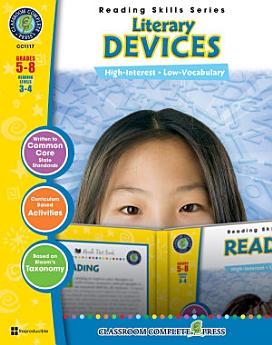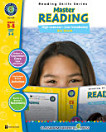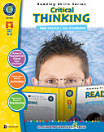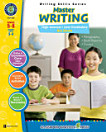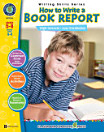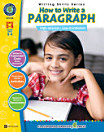Literary Devices Gr. 5-8
ม.ค. 2010 · Classroom Complete Press
eBook
62
หน้า
family_home
มีสิทธิ์
info
reportคะแนนและรีวิวไม่ได้รับการตรวจสอบยืนยัน ดูข้อมูลเพิ่มเติม
เกี่ยวกับ eBook เล่มนี้
Explore the language of storytelling and discover the meaning and purpose of literature with Literary Devices. Definitions of important terms and many opportunities to practice the skills being taught make our resource user-friendly and easy to understand. Examine the fundamental devices that make up any story, starting with characterization. Break down a character into their simple parts: dialog, appearance, thoughts, actions, and reactions. Take a look at the time, place and conditions of a story. Learn how setting can help establish the mood or atmosphere. Use graphic organizers to map out the plot. Find out how a story unfolds with the rising action, climax and resolution. Next, dissect a story's main purpose by identifying its theme and point of view. Aligned to your State Standards and written to Bloom's Taxonomy, reproducible writing tasks, crossword, word search, comprehension quiz and answer key are also included.
ให้คะแนน eBook นี้
แสดงความเห็นของคุณให้เรารับรู้
ข้อมูลในการอ่าน
สมาร์ทโฟนและแท็บเล็ต
ติดตั้งแอป Google Play Books สำหรับ Android และ iPad/iPhone แอปจะซิงค์โดยอัตโนมัติกับบัญชีของคุณ และช่วยให้คุณอ่านแบบออนไลน์หรือออฟไลน์ได้ทุกที่
แล็ปท็อปและคอมพิวเตอร์
คุณฟังหนังสือเสียงที่ซื้อจาก Google Play โดยใช้เว็บเบราว์เซอร์ในคอมพิวเตอร์ได้
eReader และอุปกรณ์อื่นๆ
หากต้องการอ่านบนอุปกรณ์ e-ink เช่น Kobo eReader คุณจะต้องดาวน์โหลดและโอนไฟล์ไปยังอุปกรณ์ของคุณ โปรดทำตามวิธีการอย่างละเอียดในศูนย์ช่วยเหลือเพื่อโอนไฟล์ไปยัง eReader ที่รองรับ
